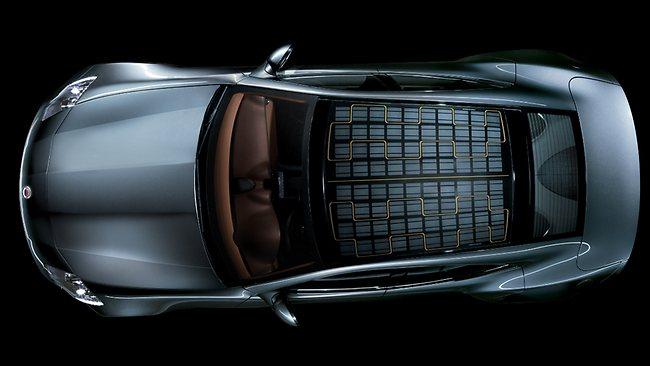Karma chameleon
FOR drivers of electric cars with range anxiety – that is, fear of a flat battery - comes a car with a power back-up.

WHEN IT comes to technology, I'm less of an early adopter and more of a reluctant embracer. But there are advantages.
After staring with amazement at my friends’ hasty adoption of iPhones and wondering whether I’d even be able to operate one, they looked peeved when I got an iPhone 4. Now they have late-onset envy. What, the iPhone 3 can’t run this app?
Now I’m sure the batteries have got better, too, but all that app-ability does come at a price. The first time I used my iPhone out of the office I drained it in hours and had no way of recharging. Then I discovered that if you turn off most of the functions, you can keep the essential processes running. If my iPhone was a house, we’d all be huddled in one room with a one-bar heater and a 60W bulb. But it does mean I’ve got enough left to turn on all the lights when I need to.
Of course, that also means that most of the time my iPhone is little more than a phone, rather than an all-purpose bells-and-whistles handheld computer. A bit like my old Nokia. Except it needs recharging every day.
This sort of paradox also plagues electric cars. If you clump together enough phone batteries you can make an electric car that’s blindingly quick off the mark because electric motors, unlike internal combustion engines, deliver all their oomph from zero revs. You don’t even need to change gear because electric motors just keep going. This is exactly what Tesla did to make its pioneering Roadster. It took a Lotus Elise, swapped the petrol engine for an electric motor and fitted thousands of lithium-ion batteries.
No question, the Tesla has the pace. It’s a sportscar all right and an impressive one. But you very quickly realise this: drive it as intended and the range display will fall faster than Greek bond prices. Of course, if you back off its range display climbs. But you’re left not really knowing how much of its performance you can use. And for how long. The trade-offs begin the moment it’s unplugged. Distance or speed? Range anxiety – the concern of battery vehicle drivers that they’re going to be stranded – begins at home. Unlike running out of fuel, there’s no quick
fix. You could be stranded for hours.
Which is why some car companies have come up with a solution. If batteries alone won’t do the trick, then add a generator. And to run the generator, put in another power source. An engine, perhaps. Now you have what the industry calls an extended-range electric car.
The first performance car with this sort of system is the Fisker Karma, which was developed in California and is being built in Finland by the same company that makes the Porsche Boxster. The Karma is a rival for slinky four-doors such as the Mercedes-Benz CLS or Porsche Panamera, but with a twist. As well as two electric motors driving the rear wheels it has a 2L turbo-charged, four-cylinder engine up front, powering a generator when required. Stealth mode will get you 80km on lithium ion chemistry alone, but switch to Sport and petrol comes to the party. It adds another 400km range and delivers a respectable 5.9 second time to 100km/h as well as 200km/h top speed.
The Karma reinforces its green credentials with a low-carbon leather cabin, recovered wood trim and solar panels to keep the aircon running. It costs $US95,900 in the US, which is serious luxury car money over there, but Washington will endorse your choice with a $US7500 tax credit. There are plans to offer it in Europe, where there are similar schemes, and Fisker believes it can sell 15,000 a year.
Given its swish lines, it comes as a surprise that the designer, Henrik Fisker, was inspired by a Prius driven by Leonardo di Caprio. But Henrik has an impressive CV that includes beautiful coupes such as the Aston Martin DB9 and he’s come up with something special. The Karma can beat a Prius at the bowser too, with a claim of 2.4 litres per 100km fuel efficiency. Di Caprio has decided that green-ness demands another green car, and the first Karma has his name on it.
If the Karma is the iPhone 4 of hybrids, then it can’t avoid some of the drawbacks, too. It needs recharging every night and must generate its own fake soundtrack because the electric motors don’t make an appealing noise. Or much noise at all.
And despite an aluminium skeleton, the Karma is a leviathon because batteries to power a car almost 5m long add a lot of weight. Then it’s got to carry around two motive sources – the electric motors and the petrol engine – to defeat range anxiety. It weighs more than 2.5 tonnes with no one aboard, or as much as a Range Rover. A lot of the time, that’s redundant weight. It’s a bit like carrying around my iPhone and the old Nokia at the same time.
Which I don’t, of course. The iPhone relies on a bit of compromise to give its best but, when I want it to, it can do a lot more things than just phone. The Karma? Fuel efficiency aside, it’s still just a car.


